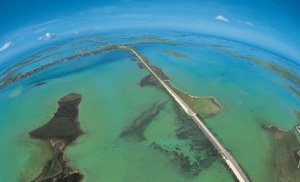An Alternative Perspective for International Human Geography

On Tuesday 28 October 2014, Dr Caterina Martinelli shared with us her current research on what we might call the ‘geographies of human geography’, or more specifically, the debate centred on the cultural imperialism that characterises Anglophonic cultural geography. Caterina is a lecturer in Human Geography at the University of Verona and we are fortunate to have her in our department as a visiting scholar this term. Caterina is not new to Royal Holloway. She participated in our MA Cultural Geography (Research) in 2011 and spent a research period in the department last year. She is currently working with RHUL to build a partnership with Verona’s Department of Time, Space, Image, Society which, among other things, will involve PhD students and staff exchanges. We see this as an important opportunity to develop a space for dialogue between two different academic traditions—the British and the Italian—that have not always been effectively communicating with each other.
Caterina’s contribution to LS focussed precisely on this lack of communication (or inability to communicate), which has resulted in what she calls ‘an epistemological gap’ between these two realities.
“When I first arrived at RHUL and tried to engage in the intellectual life of the Department, as an Italian human geographer, I experienced a deep sense of disorientation. The cultural geography I was suddenly faced with was very different from what I had studied in Italy for so many years and from what I had experienced cultural geography to be about”. This initial sense of disorientation led Caterina to interrogate herself on the divide between the Italian and Anglophone traditions and on the reasons behind it.
Where does this gap originate from? Can we trace it back to a precise moment in time? Is it something we can overcome? And if so, how?
Caterina’s research started from her will to identify the characteristics and causes of the distance between the two traditions and contemporary disciplinary practices, as well as from her aspiration to facilitate a more pluralistic and inclusive international debate.
The lack of attunement between Anglo-American geographical debates and those belonging to other national contexts has already been acknowledged (see, for example, Social and Cultural Geography’s country reports, or the various contributions related to the debate on Anglo-American hegemony in human geography, such as Fuller and Minca 2013 and Minca 2013, just to mention two among the most recent). However, the causes and some relevant characteristics of this lack of attunement have not been properly tackled yet.
According to Caterina, there is a fundamental misalignment between the epistemological premises that move mainstream geographical inquiry in the Anglo-American context and those inspiring a consistent part of geographical research in many other countries. Caterina traces the origins of this misalignment back to the renewed conception of culture, space and their interactions introduced by the so-called ‘new cultural geography’ in the 1980s, and in its different reception (or lack of reception) in the Anglo-American context and outside of it. British new cultural geography absorbed the new lexicon developed by the French spatial thinkers in order to make sense of the post-modern world with its time-space compression and its many contradictions. From the French thinkers new cultural geographers also absorbed the idea that theory is political (not a meta-discourse) and performative (it produces the reality it describes, thus it can change the world rather then simply describe it). Drawing on these ideas, British geographers started to construct the theoretical apparatus and vocabulary of a ‘new’ cultural and human geography for the third millennium, which continues to inform mainstream debates and to define the international standards of the discipline. Generally speaking, non-Anglo-American geographers did not participate in this process, and for this reason, they developed geographical debates generally based on more traditional conceptualizations of space, culture and their interactions.
Besides this ‘epistemological gap’, there is also an institutional and cultural gap. For example, until the early 2000s the then-existing Italian policies for research funding, academic recruitment and careers made the participation in national discussions and contexts more relevant than participation in the international arena. Furthermore, while the UK and North America boast large research-led geography departments, in Italy the panorama is much more fragmented. Most Italian geographers are scattered among different departments and research is not always a priority (or at least, not to the same extent it is in the UK and North America).
The result is that nowadays ‘internationalization’ in our field has become largely synonymous with ‘Anglophonization’. With the globalisation of academia and neo-liberalization of many national academic systems, geographers from non-Anglophone countries (such as Italy) are progressively called to publish in ‘high-impact’ journals and to attend conferences and other events taking place in spaces internationally acknowledged as ‘spaces of excellence’. These venues and publishing spaces are produced, governed and occupied mainly by Anglo-American human geography/ers, and these processes therefore foster an Anglo-American hegemony within the discipline at an international level.

While this might also be the case with other disciplines, (cultural) geography certainly stands out. On the one hand we have a mainstream Anglophone cultural geography almost obsessed with novelty (new fashions, new paradigms, cutting-edge theories), often trapped within its own networks, and creating spaces and cultural economies that accommodate and foster change (AAG meetings, journal special issues, etc.); on the other, we have an incredibly fragmented Italian panorama governed, as it is, by different intellectual agendas that move at different speeds and often in very different directions. The ‘power geometries’, to use Doreen Massey’s phrase, that govern these spaces are complex and varied. Some Italian geographers are keen (or pushed) to publish in mainstream international journals; others are not. Some are often not aware of the theoretical stances which support the approaches of mainstream Anglophone geography; others appropriate names and concepts from Anglophone geography in a rather shallow fashion, without critical depth. At the same time, exciting interdisciplinary collaborations between Italian scholars are opening up new horizons and possibilities. Is this the key for a future dialogue? Is interdisciplinarity a precondition for internationalization?
Caterina’s presentation generated a very rich discussion, which highlighted the need for further critical reflection and research. It also showed the importance of engaging geographers ‘from both sides of the Channel’ in a common discussion about the different ways of conceiving geography in different places and about the possibility and desirability to create spaces for dialogue.
“I believe that focusing our attention on the ‘misalignment’ between Anglophone and Italian human geography, and creating occasions for inclusive debates on space, culture and their relationships can place Anglophone and non-Anglophone geographers at the roots of the current divide and mark a step forward towards true plural participation”.
References
Fuller J.J. and Minca C. (2013), Not a geography of what doesn’t exist but a counter-geography of what does: Rereading Giuseppe Dematteis’ Le Metafore della Terra. Progress in Human Geography, 37, 542-563.
Minca C. (2013), (Im)mobile Geographies. Geographica Helvetica, 68, 7-16.

